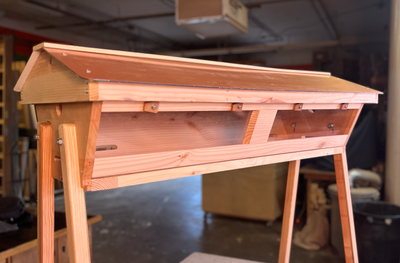Looking to get started in beekeeping, but don't know where to start? After years of helping beekeepers get started, we've built the simplest guide with the most popular selections to help you make the best decisions for your beekeeping journey! Read below to get started in five simple steps!
Beekeeping Quick Start Guide
1. Get Your Hives & Equipment
Get your hives and equipment ordered. Most beekeepers begin with either a Standard Langstroth Deep Hive Starter Kit or Classic Langstroth Deep Hive Starter Kit, along with a second hive of the same design for interchangeability. Unless you’re experienced or have a mentor helping you with an alternative hive, we recommend starting with a Langstroth as they have the most resources available. Branch out to other styles after you’ve got a season or two under your belt, or if you have a mentor versed in using alternatives. If you're dead set on starting out with an alternative hive, we're here to help! However, your safest bet is still a couple Langstroth hives to start.
Standard Deep Starter Kit
Our most popular hive with all of the accessories you need to get started, including a ventilated beekeeping jacket, gloves, smoker, hive tool, brush, and tung oil. The standard deep hive is made from sustainable sugar pine, and includes a single deep box with windows on each side. Choose between 8-frame or 10-frame width, jacket size, glove size.
Classic Deep Starter Kit
Includes the same beginner beekeeper accessories as the standard starter kit, along with our classic deep hive with two boxes with windows on each side. Made from sustainable douglas fir. Simply choose between 8-frames and 10-frames per box, jacket size, glove size, and you're on your way!
2. Order Bees or Get a Lead on a Swarm
Order bees or get a lead on a swarm. Our favorite option is a feral swarm, which you can certainly lure into your hive with an attractant like lemongrass oil or partner with a beekeeper who catches swarms to get on their list.
Swarms are not guaranteed so it’s a good idea to order at least one package or nucleus colony from one of the following bee suppliers: Bee Weaver, Wolf Creek Bees, Honeybee Genetics, etc. Many of our customers start out with one package or nucleus colony, and fill their second hive with a swarm!
3. Read These Books
Read these books. If you ordered the hive starter kit we recommend above, you’ve already got The Idiot’s Guide to Beekeeping. (You’re not an idiot; this book is good!) Read that first. Then, read The Practical Beekeeper Volume I (or all three volumes!), and Swarm Traps and Bait Hives. After this, you’re no expert, but you’re on your way to becoming a beekeeping addict with a functional base of knowledge.
4. Find a Bee Club
Go to a beekeeping meeting if there’s one in your area. Bee meetings are interesting places full of passionate beekeepers. They love to argue, but at the end of the day they all love honey bees and are trying, in their own ways, to help them thrive. You can learn a lot at any beekeepers meeting, regardless of the management styles of others. Just be sure to make up your own mind about how you want to keep bees.
5. Keep Learning
Once you've got your hives, equipment, and bees lined up, it's time to keep learning! Here are some online resources that will aid you in your beekeeping journey





